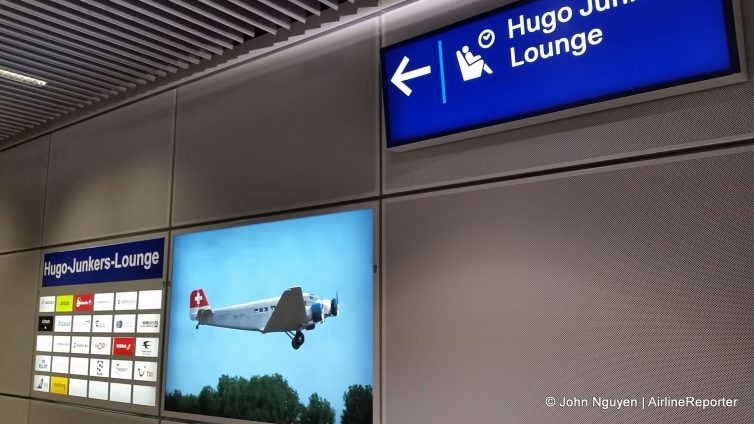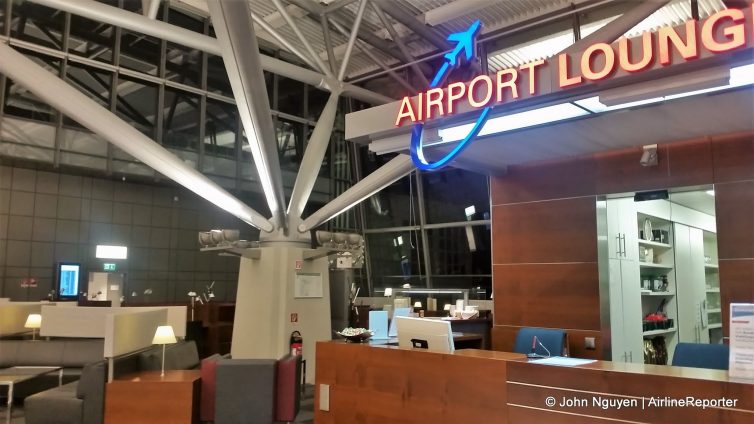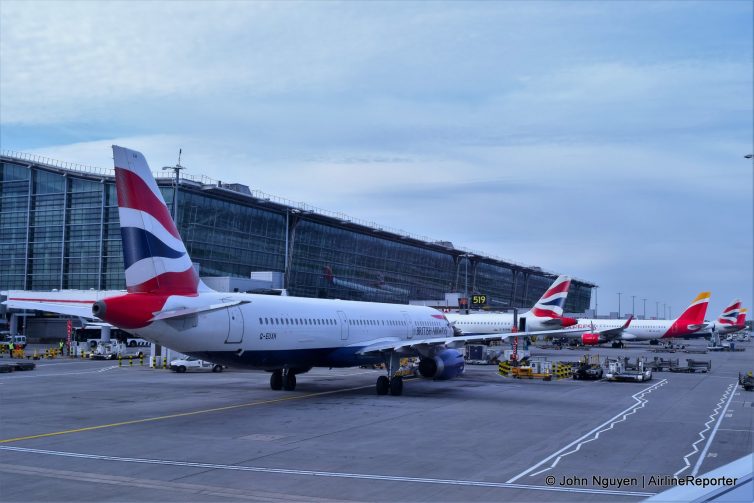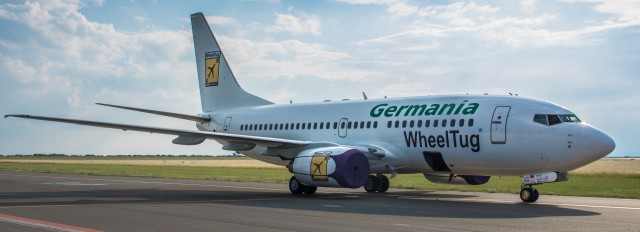
Follow the signs to the Hugo Junkers Lounge in DUS.
Recently on a oneworld itinerary connecting through Dà¼sseldorf Airport (DUS), I was able to visit the Hugo Junkers Lounge, which is contracted by several airlines to serve their premium passengers. As I said in my review of the Hamburg Airport Lounge, I’m always iffy when it comes to third-party lounges, so I headed up the elevator with cautious optimism.
As a oneworld Sapphire elite member (in my case, Platinum on American Airlines), flying with Oneworld partners grants me access to airport lounges, though with the caveat that lounges operated by third parties may not be available. Fortunately, that restriction wasn’t in place on this trip; previously, flying Air Berlin on my first leg from Hamburg (HAM) to DUS, I was given access to the Hamburg Airport Lounge. My next leg from DUS to London Heathrow (LHR) was on British Airways, which contracts with the Hugo Junkers Lounge operated by DUS, to which I was also granted access thanks to my status.
Wikipedia: Who is Hugo Junkers?
The Hugo Junkers Lounge also contracts with several other airlines departing out of in the Schengen zone (read: mainly any airline not named Lufthansa), as well as a few membership programs. One could also pay €21 for access (credit cards only).

Entrance to the Airport Lounge at Hamburg Airport
I’ve been through many lounges, and a big ’œred flag’ for me is whether I’m about to step foot into a contracted lounge instead of one run by an airline itself. Being a oneworld alliance guy at a non-hub outstation like Hamburg, it could have been like being stranded in a desert, parched and wanting of nourishment. On top of that, I was flying Air Berlin, which isn’t usually among the first three or four airlines one thinks of in terms of quality oneworld lounging. Was I going to have to kill some time [like a savage – too much snark?] or [perusing duty-free items] in the main terminal area, or would I be pleasantly surprised…

London Heathrow Airport Terminal 5
I recently had the opportunity to fly both British Airways and Iberia in short-haul economy, and talk about a 180-degree difference, especially striking when both are owned by the same parent company. While short flights don’t generally get much consideration, when one carrier offers so much more than another on the exact same route (namely between London and Madrid) for the exact same price, it’s probably better to go with the airline that will offer more and avoid the one that (spoiler alert) won’t even give you water.

WheelTug testing at Prague Airport using a Germania 737-700 in June, 2012. Yes, it’s moving!
Courtesy: WheelTug
You may have read my recent report on the Honeywell/Safran Electric Ground Taxi System, or EGTS. But as we’ve seen countless times with many technologies, there’s rarely just one solution to a challenge. We’ve had the 707 & DC-8 duo, L-1011 & DC-10s, 737 & A320s, PCs & Macs, iThingys & Everything Else… you get the idea. Interesting, though, that the market usually settles down to 2 options. So it should be no surprise that there’s another E-Taxi system, one that takes a different approach to meeting the same objectives of saving fuel, time, and other operational costs.
Gibraltar-based WheelTug decided to figure out a way to power the nose gear in their E-Taxi solution, and not the main gear. Their reasons? Easier and quicker installation; no interference with braking and anti-skid systems; shorter cable runs to the equipment bay under the cockpit; and it’s lighter, on the single nose gear rather than two main gear. But there isn’t much space available on the nose gear and in the wheel well. To make it all work, WheelTug looked to an old idea updated with new technology – the “wheel-hub” electric motor.



